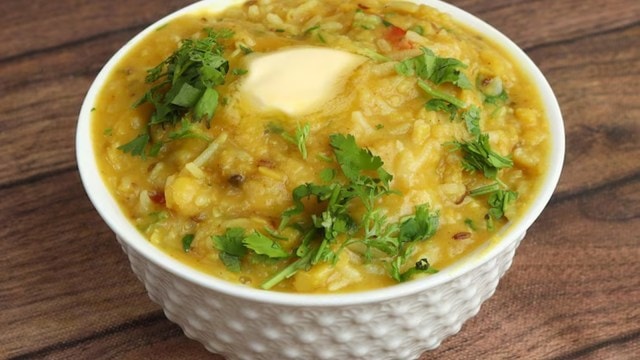📣 For more lifestyle news, click here to join our WhatsApp Channel and also follow us on Instagram
Why we eat khichdi on Makar Sankranti
While kite flying, prayers, and sweets made from sesame seeds are common highlights, khichdi remains an indispensable dish in many households, especially in North India.
 Discover why khichdi holds a special place on Makar Sankranti, exploring its cultural, religious, and nutritional significance in India. (Source: Freepik)
Discover why khichdi holds a special place on Makar Sankranti, exploring its cultural, religious, and nutritional significance in India. (Source: Freepik)India’s culture is woven with traditions, many of which are tied to food. One such tradition is the preparation and consumption of khichdi on Makar Sankranti, the harvest festival that marks the Sun’s transition into Makar Rashi (Capricorn).
This festival is celebrated across India, albeit under different names and with varied customs. While kite flying, prayers, and sweets made from sesame seeds are typical highlights, khichdi remains an indispensable dish in many households, especially in North India.
The significance of khichdi on Makar Sankranti
Khichdi, a simple yet wholesome one-pot meal made from rice, lentils, and spices, holds immense symbolic and practical value on Makar Sankranti. The dish has been a key part of the celebrations for centuries, often served with ghee or jaggery for added richness.
According to head chef and restaurant consultant Tarveen Kaur, the significance of eating khichdi on Makar Sankranti goes beyond just a meal—it symbolises gratitude for the new harvest and prosperity for the year ahead. As the region’s agriculture thrives in the colder months, with freshly harvested grains, khichdi ties the community back to the land. The simplicity of the dish—easy to make and using locally sourced ingredients—reflects the agricultural practices of North India, where farming remains deeply embedded in the culture.
 Khichdi, a simple yet wholesome one-pot meal made from rice, lentils, and spices, holds immense symbolic and practical value on Makar Sankranti (file)
Khichdi, a simple yet wholesome one-pot meal made from rice, lentils, and spices, holds immense symbolic and practical value on Makar Sankranti (file)
Additionally, Kaur said winter demands nutrient-rich, warming foods and khichdi fits the bill perfectly. Packed with carbohydrates, proteins, and fibre, it provides essential energy and warmth during the chilly season.
Khichdi’s humble origins and simplicity resonate with the ethos of Makar Sankranti, a festival celebrating the natural world and its abundance.
Here are some regional twists to good old khichdi
While the basic recipe remains constant, khichdi is often prepared differently across regions during Makar Sankranti:
- Bihar and Uttar Pradesh: Served with ghee, chutney, pickles, and sides like papad. It is accompanied by tilkut (sesame and jaggery sweet) to complete the festive meal.
- West Bengal: The Bengali version, known as “bhog er khichuri,” is often made with moong dal and offered as prasad to deities.
- Gujarat: Khichdi is often enriched with seasonal vegetables to celebrate the harvest.
- Rajasthan: Bajra (pearl millet) khichdi is a popular variation that adds a regional grain to the mix.
📣 For more lifestyle news, click here to join our WhatsApp Channel and also follow us on Instagram






- 01
- 02
- 03
- 04
- 05





















